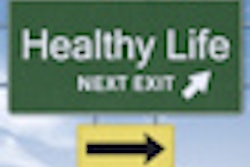The American Academy of Pediatric Dentistry (AAPD) agrees with many of the recommendations cited in the recent Institute of Medicine (IOM) report on access to oral healthcare in the U.S., including the suggestion to raised dental reimbursement rates for Medicaid and the Children's Health Insurance Program (CHIP), according to an AAPD statement.
The mission of the AAPD is to promote optimal oral health for all children, and its members are the frontline providers of oral healthcare for the nation's infants, children, adolescents, and patients with special healthcare needs, the organization noted. Pediatric dentists treat a higher percentage of Medicaid and CHIP patients than any other type of dentist. While all pediatric and many general dentists treat children, pediatric dentists train 100% of all the dentists who treat children, according to the AAPD.
An estimated 70% of AAPD members participate in Medicaid and CHIP, but this percentage would be even higher, and would dramatically increase among general dentists, if these programs were funded closer to market-based rates, the AAPD stated.
However, the AAPD also took exception with parts of the IOM report.
"The AAPD is concerned that the IOM report did not emphasize enough the importance of and proven effectiveness in disease prevention by establishing a dental home by age 1 -- usually in a private dental practice setting," stated Rhea Haugseth, DMD, AAPD president. "Such early intervention keeps children from developing oral disease and starts them out on a lifetime of good oral health. We believe that the IOM report missed a golden opportunity to stress the importance of seeing a dentist by age 1."
That could be the result of the IOM having no private practicing pediatric dentists serve on the committee that wrote the report, Dr. Haugseth added.
"The IOM report is also much too muted on the importance of oral health literacy," she added. "Many organizations, including the AAPD, are working on this front, but these messaging efforts require widespread education in schools and other areas outside of the dental or medical office. Many preventive practices to reduce oral disease can be incorporated at home, such as regular brushing, flossing, and a healthy diet."
The IOM report suggests spending even more federal funds on oral health services in federally qualified health centers (FQHCs). In 2000, Congress provided greater state flexibility for creating new and exclusive reimbursement mechanisms for FQHCs under Medicaid. Additionally, in 2002, Congress created a new "facility" shortage designation for FQHCs. This allowed FQHCs to be designated as health professional shortage area facilities, thereby permitting participation in the National Health Services Corps program.
Despite implementation of this additional support for FQHCs, access to oral healthcare continues to be a challenge for the most vulnerable children, the AAPD noted. Although FQHCs are an important part of the safety net, they do not have the capacity or efficiency of private dental offices. The CHIP reauthorization law of 2009 gives FQHCs the authority to contract out to private dental providers, and the AAPD recommends that FQHCs use the option to contract with private practice pediatric dentists, and this approach be vigorously promoted by the Health Resources and Services Administration.
The AAPD strongly supports expanded function dental auxiliaries to improve dental practice efficiency and expansion of services to more patients. However, other models are promoted in the IOM report without evidence they would have an impact on improving access to care. While the AAPD advocates for appropriate preventive counseling and intervention by physicians and other nondentist providers, such efforts need to be in tandem with the establishment of a dental home, the organization concluded.



















